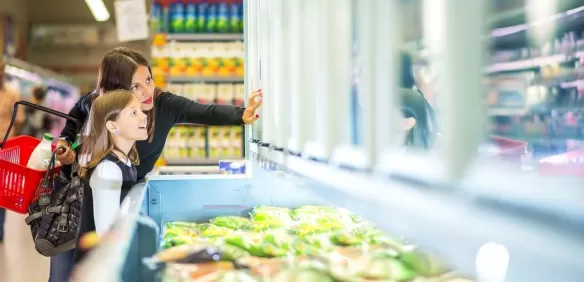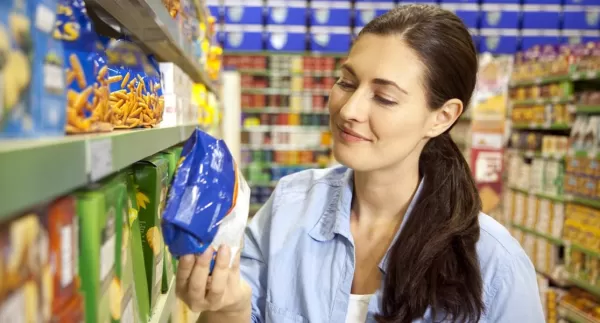
How to package under modified atmosphere in your restaurant
Several techniques are available to restorers to increase the lifespan of their products. Packaging in a protective or modified atmosphere (MAP) presents itself as an excellent alternative for restaurateurs who want to sell takeaways.
The pandemic has changed our habits. Health measures have forced the closure of restaurants, which to survive have developed take-out services.
Takeaway and home delivery are real underlying trends constituting a real source of additional income. Offering a wide choice of home-made dishes or local or international specialties, they allow you to stay in daily contact with your customers. If today they still respond mainly to local demands, manufacturers and restaurateurs are structuring themselves to expand their offers thanks in particular to the development of digital platforms and temperature-controlled logistics solutions.
Health & safety requirements
When takeaway or home delivery concerns ultra-fresh products, that is to say produced and eaten within the day, the service is easy for a restaurateur. When, on the other hand, we wish to offer several days of conservation, it is necessary to rethink its organization. The products are in fact subject to fresh produce regulations. Very strict hygiene procedures must be respected. Specific labeling is also mandatory, including the date of manufacture, a batch number and the shelf life of the product.
Which products can be packaged in a modified atmosphere?
A large number of fresh food products can be packaged in a modified atmosphere: meat, fish, fresh fruit and vegetables, bakery products and cold meats. Ready meals and catering products are also very widespread, offering real ready-to-eat advantages.
What food packaging for takeaway?
Several techniques are available to restorers to increase the lifespan of their products. Traditionally, vacuum packaging is already implemented in the restaurant; it is a valuable tool to better manage stocks and avoid food waste. It can be used for take-away sales but only for products that accept crushing, induced by the technique.
Packaging under a protective (or modified) atmosphere presents itself as an excellent alternative. The process consists of eliminating air and in particular oxygen around the product to be packaged and replacing it with an appropriate gas or gas mixture, based on nitrogen or carbon dioxide in general, with the aim of improving the shelf life of the food. The volume of gas around the product prevents contact of the film with the food and protects it against crushing.
Packaged in a protective atmosphere in good conditions
Getting started in modified atmosphere packaging requires working in good conditions. Of course you need a machine, a film and a packaging gas. But you also have to work in a specific environment where hygiene rules will be respected. Packaging in a protective atmosphere slows down microbial development; it in no way eliminates initial contamination or contamination brought via personnel or premises.
Which machine to choose?
Vacuum packaging machines can sometimes be compatible for modified atmosphere packaging. If this is not the case, you must invest in a machine with gas reinjection. There are several types depending on the type of packaging chosen and the quantity of packaging to be carried out per day or per week. We distinguish between machines for sachets (bell machine) and machines for trays (bell machine or lid). There are many suppliers and resellers. The selection criteria are multiple, but proximity for advice and possible after-sales service are key.
Which packaging film to choose?
The trend is to package products such as prepared meals, catering products, vegan products, etc. In this case, the packaging film must be chosen to be gas-tight. Film suppliers are packaging specialists and will be able to advise on barrier films, with good weldability properties as well as the latest innovations in terms of biodegradable or recycled material.
Which gas to choose?
- Cases of prepared meals, catering products, fresh pasta, etc. also called intermediate humidity products.
In this case, we will favor a mixture of gases based on nitrogen and carbon dioxide. The latter acts on micro-organisms because it is bacteriostatic. It has an effect if you put a minimum content of 20% in the mixture. The higher its content (up to 50% in general), the longer the shelf life. That said, as it dissolves in water and fats, it can cause a slight spicy taste, which is reversible after opening the package and/or reheating. If necessary, we will then find a compromise between shelf life and taste quality of the product with a mixture with a lower CO2 content of 30% for example. As it is possible to store this type of product for up to 21 days in a modified atmosphere with a 50% CO2 mixture, lowering the content to 20% or 30% will allow more than a week of storage, often a duration compatible with take-away sales. The complementary gas in the mixture is nitrogen. Being a neutral gas, it remains intact in the packaging and provides the cushion effect that protects food from crushing.
- Case of pastry products.
As with prepared meals, a binary nitrogen/carbon dioxide mixture can be used. As the products are not intended to be reheated, we will favor a mixture with only 20% CO2 in the nitrogen to avoid any fear of impact on taste. Some products may contain a lot of cream in the form of whipped cream. In this case, the modified atmosphere may prove inappropriate because it risks causing the foam to “fall” during the vacuum stage before gas reinjection.
- Is a different mixture required for each product to be packaged?
When it comes to large factory productions, it is easy to dedicate production lines to each product and match the best gas mixture to the best shelf life. In the case of smaller uses, we will seek to rationalize the installation. It is in fact possible, by making an exhaustive list of products to be packaged, to find a single mixture which will satisfy all the conditions, perhaps by sacrificing a few days of conservation in certain recipes.
How to use gas?
The gases are delivered in bottles of different sizes from 4 to 10 m3 of gas. This corresponds to 6 to 10,000 trays or 1 liter sachets per bottle depending on the losses linked to the machine. They are either delivered by gas suppliers or available from distributors. The bottles are packaged under high pressures (100 to 200 bars). A regulator connected to the bottle will allow the gas to be expanded to a pressure compatible with the recommendations of the packaging machine supplier, around 2.5 - 3 bar. The connection between the bottle and the packaging machine is generally made of flexible pipe, of diameter adapted to the inlet connection on the machine. The installation must be compatible with the gas used, particularly oxygen.
Air Liquide has developed an international range of food grade gases dedicated to the food industry. It includes all gases, pure and mixed, as well as all types of supply to advantageously meet the needs of all food processing activities: the food industry, mass distribution, restaurateurs, caterers, craftsmen, ... For any advice, our food industry specialists are at your disposal to share with you good packaging practices, choose the right gas and recommend the equipment best suited to your consumption.
Do you have questions about modified atmosphere packaging in your restaurant? Please fill out our contact form.
Our experts will respond to you within 24 hours
Frequently asked questions
How to increase the shelf life of products?
What does “packaged in a protective atmosphere” mean on certain food packaging labels?
What are the different packaging machines for M.A.P?
What installation do I need to use gas?
What modified atmosphere for the conservation of fresh meats?
What modified atmosphere for bakery products?
What modified atmosphere for the conservation of seafood products?
What modified atmosphere for the conservation of cheese and dairy products?
What modified atmosphere for dry products?
What modified atmosphere for the conservation of prepared fruits and vegetables?
